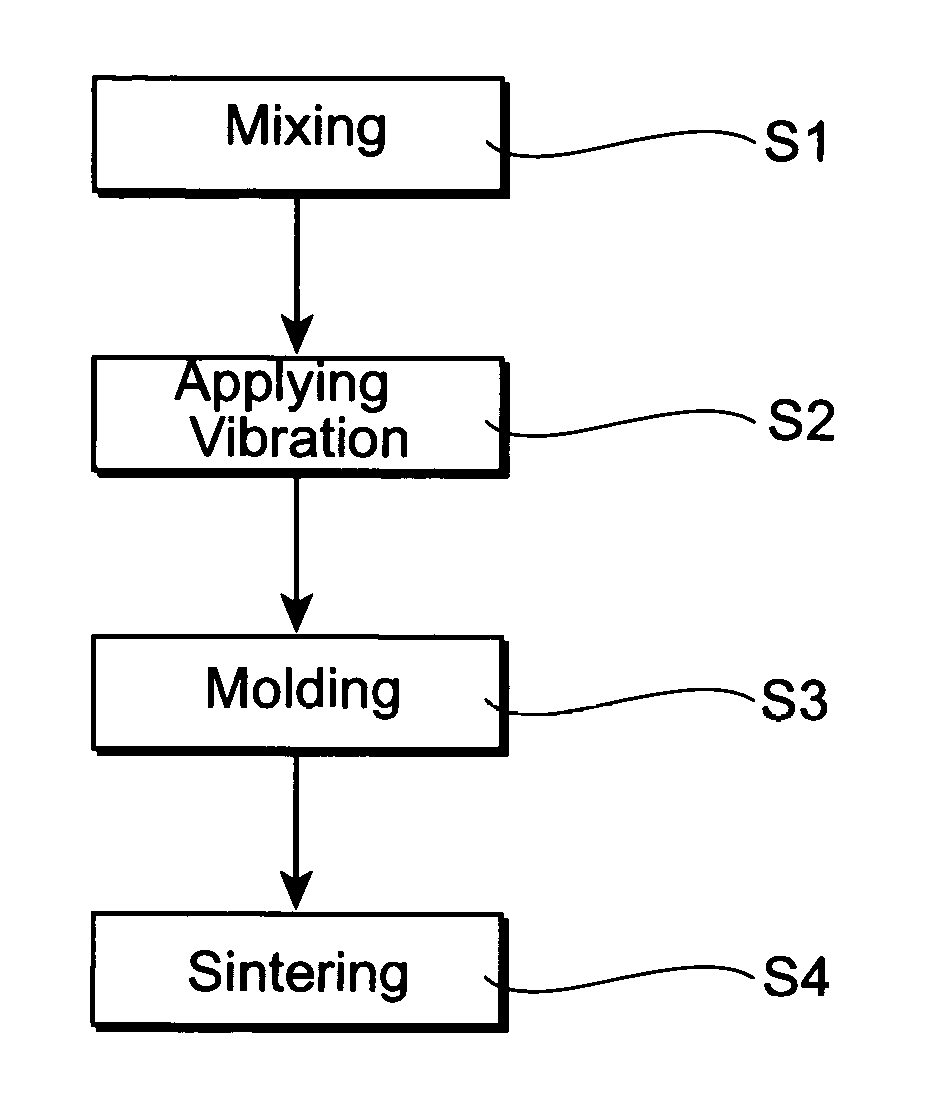Sliding part and method of manufacturing the sliding part
a technology of sliding parts and sliding parts, which is applied in the direction of mechanical equipment, rotary machine parts, transportation and packaging, etc., can solve the problems of high risk of wear, large wear of bearings, and affecting durability, so as to reduce frictional resistance, reduce wear, and improve durability.
- Summary
- Abstract
- Description
- Claims
- Application Information
AI Technical Summary
Benefits of technology
Problems solved by technology
Method used
Image
Examples
Embodiment Construction
[0029] Preferred embodiments of the present invention will now be explained in detail with reference to accompanying drawings. FIGS. 1 to 8 show an embodiment of the present invention.
[0030] First, a method for manufacturing a sliding component of the present invention will now be explained. An iron-based material powder 1, a copper-based material powder 2 and a small amount of an other material powder 3 are mixed as materials in a predetermined proportion (Step Si). For the iron-based material powder 1, a powder composed of substantially spherical and irregular particles such as atomized powder is used as shown in FIG. 2. For the copper-based material powder 2, an irregular-particle powder 2A and a flat powder particles 2B are used as shown in FIGS. 2, 3A and 3B.
[0031] An iron or iron alloy powder is used as the iron-based material powder 1, while copper or copper alloy powder is used as the copper-based material powder 2. Tin, carbon, phosphorus or zinc powder is used as the oth...
PUM
| Property | Measurement | Unit |
|---|---|---|
| Fraction | aaaaa | aaaaa |
| Fraction | aaaaa | aaaaa |
| Percent by mass | aaaaa | aaaaa |
Abstract
Description
Claims
Application Information
 Login to View More
Login to View More - R&D
- Intellectual Property
- Life Sciences
- Materials
- Tech Scout
- Unparalleled Data Quality
- Higher Quality Content
- 60% Fewer Hallucinations
Browse by: Latest US Patents, China's latest patents, Technical Efficacy Thesaurus, Application Domain, Technology Topic, Popular Technical Reports.
© 2025 PatSnap. All rights reserved.Legal|Privacy policy|Modern Slavery Act Transparency Statement|Sitemap|About US| Contact US: help@patsnap.com



